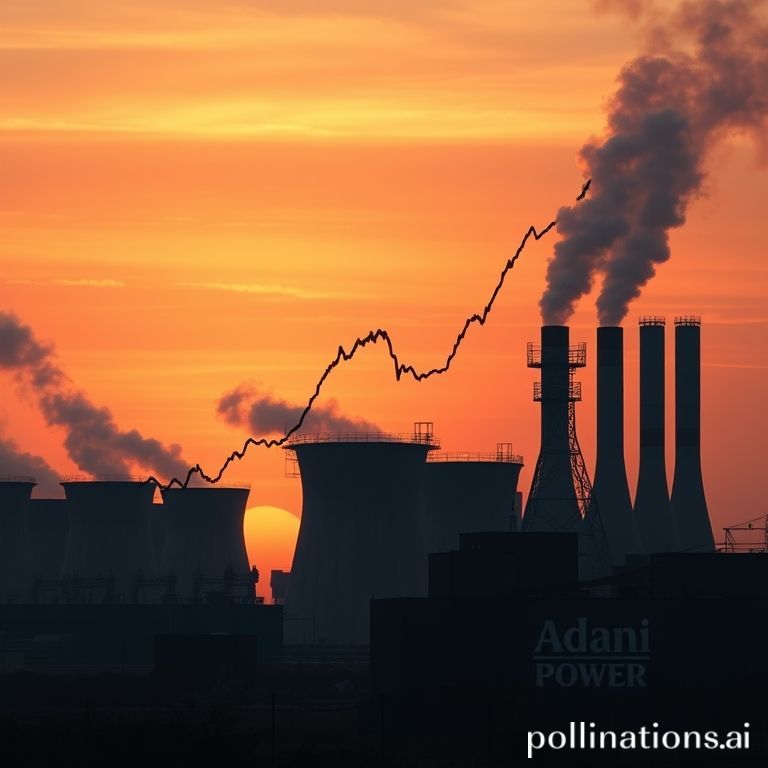Adani Power Shares: Decoding the 74% Price Adjustment Post Stock Split

Adani Power Ltd, a prominent name in India's thermal power sector, witnessed a significant adjustment in its share price today, experiencing a 74 percent drop in early trading. While such a steep decline might initially alarm investors, the reason behind this movement is straightforward and planned: a stock split. Today marked the record date for the 1:5 stock split, which means eligible shareholders received additional shares, proportionally adjusting the per-share price.
Understanding the Stock Split Impact
A stock split is a corporate action where a company increases the number of its outstanding shares by dividing each existing share into multiple shares. In Adani Power's case, one share with a face value of ₹10 was split into five shares, each with a face value of ₹2. This process reduces the market price per share, making it more accessible and liquid for a broader range of investors, without altering the company's overall market capitalization or the total value of an investor's holding. The 74 percent plummet simply reflects this recalibration, as the stock's price adjusted to account for the increased number of shares. Following this adjustment, Adani Power Ltd shares were observed trading at Rs 167.15 per share, showing an increase of approximately 19 percent compared to the previous closing price of Rs 141.80 apiece (pre-split adjusted equivalent).
Brokerage Confidence and Future Projections
Despite the dramatic short-term price adjustment due to the split, the long-term outlook for Adani Power remains robust, as highlighted by leading financial institutions. Morgan Stanley, a globally recognized brokerage, recently assigned an 'overweight' rating to Adani Power, setting a target price of Rs 818 per share. This indicates a potential upside of 29 percent from the stock's previous closing price (pre-split adjusted). Morgan Stanley's positive stance stems from Adani Power's successful corporate turnaround, which includes resolving critical regulatory issues and completing several value-accretive acquisitions. The brokerage anticipates strong earnings growth, driven by timely project completions and the securing of new power purchase agreements (PPAs).
The company itself projects an ambitious 2.5 times increase in its operational capacity and a 3 times growth in EBITDA by the fiscal year 2033. This forward-looking strategy, supported by new coal PPAs, is expected to enhance earnings visibility and solidify investor confidence in the company's future profitability and strategic expansion within the power sector.
Regulatory Clarity Boosts Investor Sentiment
Recent developments also contribute to a positive sentiment surrounding Adani Power. The Securities and Exchange Board of India (SEBI) cleared the Adani Group and its top executives of allegations previously raised by Hindenburg Research. The regulator found no evidence of legal violations, fraud, market manipulation, or insider trading. This significant clearance has played a crucial role in boosting investor confidence, potentially stabilizing stock performance and enhancing the overall market credibility for the entire Adani Group.
Financial and Operational Snapshot
While the company's long-term trajectory appears promising, its recent financial performance shows some short-term fluctuations. Revenue decreased by 6 percent from Rs 14,956 crore in Q1FY25 to Rs 14,109 crore in Q1FY26. Concurrently, net profit saw a 16 percent decline from Rs 3,913 crore to Rs 3,305 crore over the same period. However, these figures need to be viewed in the context of broader market dynamics and the company's aggressive expansion plans.
Operationally, Adani Power boasts an impressive installed capacity of 18,150 MW. This capacity is a blend of 10,840 MW from organic generation through efficient plants and 7,270 MW from inorganic growth through strategic acquisitions. The company’s portfolio includes flagship plants in key regions such as Gujarat, Maharashtra, Rajasthan, and Jharkhand, utilizing advanced supercritical and ultra-supercritical technologies for power generation. Recent inorganic additions total 2,900 MW, encompassing plants like Korba (600 MW), Mutiara (1,200 MW), Dahanu (500 MW), and Butibori (600 MW). Furthermore, rapid turnarounds led to the integration of 4,370 MW from plants like Udupi, Raipur, Raigarh, and Mahan. With an additional 10,920 MW currently under development, Adani Power is clearly positioned for substantial future capacity expansion, underpinning its growth strategy.
Conclusion: A Strategic Adjustment, Not a Crisis
In summary, the 74 percent fall in Adani Power shares today was a direct consequence of its 1:5 stock split, a strategic move designed to increase liquidity and accessibility for investors. This adjustment should not be misconstrued as a financial crisis. Instead, the company appears well-positioned for future growth, backed by favorable brokerage recommendations, robust expansion plans, and renewed investor confidence following regulatory clearances. Investors should look beyond the immediate price adjustment and consider the company's strategic initiatives and long-term potential in the dynamic power sector.
